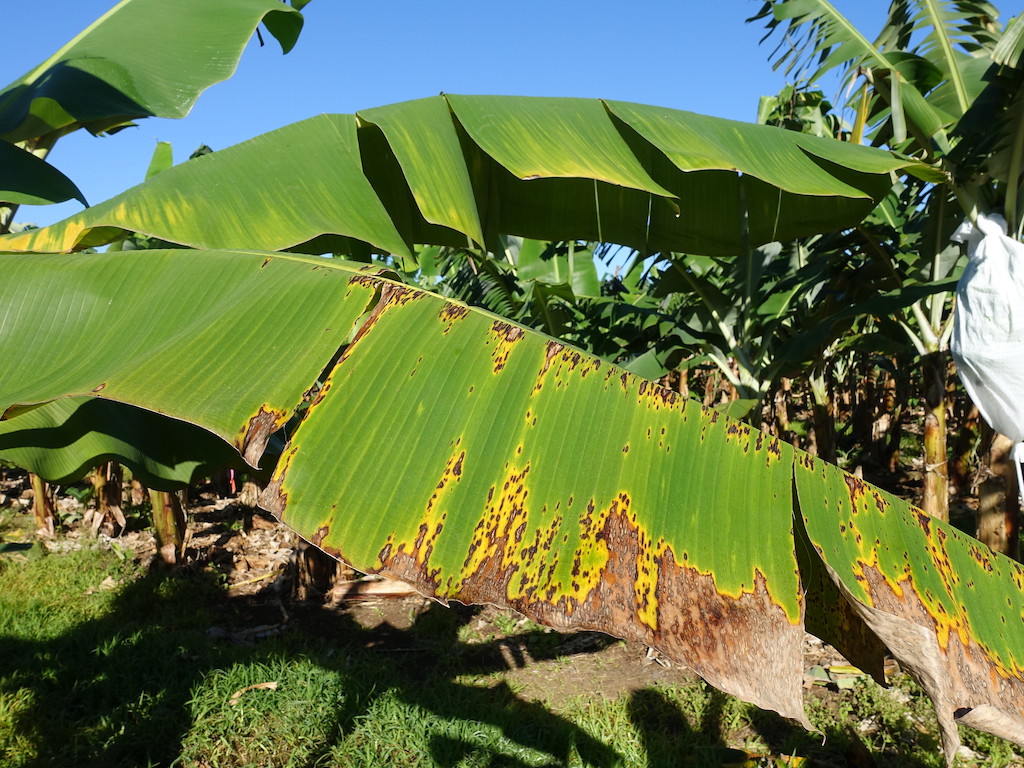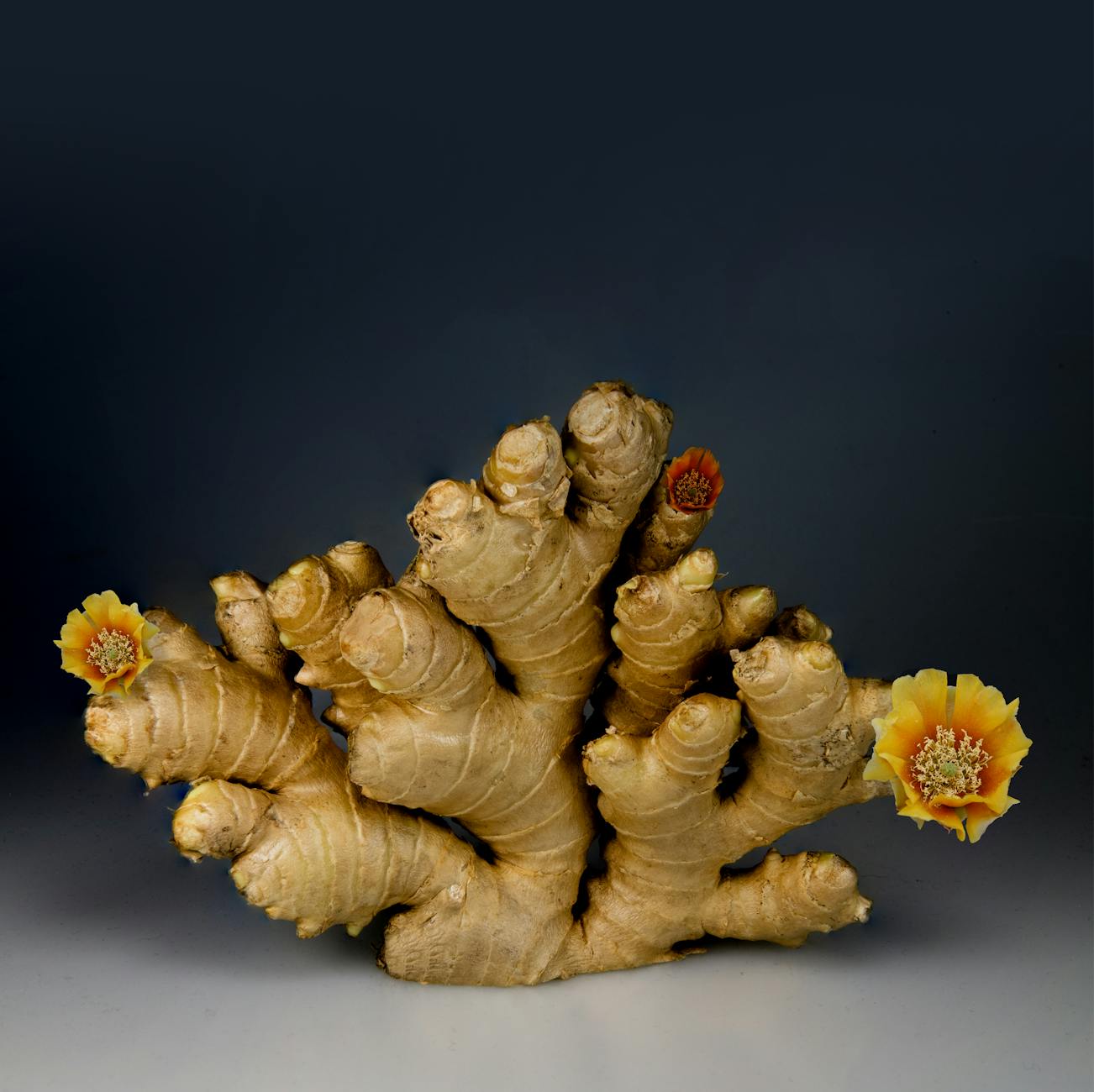Bananas are beloved for their delicious taste and vibrant appearance, but they are not immune to the challenges posed by various diseases. As a banana farmer or enthusiast, it’s essential to familiarize yourself with common banana diseases, recognize their symptoms, and know the appropriate solutions. So, grab your detective hat and let’s solve the mysteries of banana diseases together!
Fusarium Wilt (Panama Disease)

Symptoms:
- Yellowing and wilting of lower leaves, progressing upwards
- Brown discoloration and splitting of pseudostem
- Poor fruit development and premature ripening
Solution:
- Plant disease-resistant banana varieties, such as the Cavendish FHIA-01 or Grand Nain.
- Practice crop rotation, avoiding planting bananas in the same area for at least 5-10 years.
- Implement strict sanitation measures to prevent the spread of the disease.
Black Sigatoka

Symptoms:
- Small, dark brown spots on leaves, gradually enlarging and coalescing
- Yellowing and drying of affected leaves
- Reduced photosynthesis, leading to poor fruit quality and yield
Solution:
- Regularly spray fungicides approved for black Sigatoka control. Follow label instructions carefully.
- Choose banana cultivars known for their resistance to black Sigatoka, such as Williams or Goldfinger.
- Maintain good airflow and remove infected leaves to minimize disease spread.
Banana Bunchy Top Virus

Symptoms:
- Stunted growth with short and narrow leaves
- Chlorotic (yellow) streaks on leaves
- Twisted and deformed appearance of the bunch, reduced fruit size
Solution:
- Remove and destroy infected plants, including the entire plant and its root system.
- Plant resistant varieties, like the FHIA-17 or Goldfinger, in areas prone to the virus.
- Control the banana aphid population, as they are responsible for spreading the virus.
Banana Mosaic Virus

Symptoms:
- Mosaic-like patterns on leaves, with irregular green and yellow patches
- Distorted and crinkled leaves
- Reduced plant vigor and poor fruit quality
Solution:
- Remove and destroy infected plants to prevent further spread.
- Control aphids and other insect vectors that transmit the virus.
- Plant virus-free banana suckers obtained from reliable sources.
Leaf Spot Diseases

Symptoms:
- Circular or angular spots on leaves, varying in color from brown to black
- Leaf yellowing, wilting, and premature defoliation
- Reduced photosynthesis and overall plant health
Solution:
- Practice good sanitation by removing and disposing of infected leaves.
- Apply appropriate fungicides labeled for leaf spot diseases as per the recommended schedule.
- Ensure proper spacing and good airflow to minimize humidity and leaf wetness.
Nematodes

Symptoms:
- Stunted growth and yellowing of leaves
- Root galls or knots, visible upon careful inspection
- Reduced yield and poor overall plant health
Solution:
- Use nematode-resistant banana varieties, such as FHIA-01 or FHIA-18.
- Practice crop rotation with non-host plants to reduce nematode populations.
- Maintain good soil health and fertility to enhance plant vigor and tolerance.
Root Rots
Symptoms:
- Yellowing and wilting of leaves, even with sufficient water supply
- Decay and discoloration of roots upon examination
- Reduced growth and eventual death of the plant
Solution:
- Ensure proper soil drainage to prevent waterlogging, a common cause of root rot.
- Avoid overwatering and provide adequate aeration to the root zone.
- Apply appropriate fungicides labeled for root rot control, following the recommended application rates and timing.
Bonus Tip: Prevention is Better than Cure
- Implement good hygiene practices, such as removing and disposing of diseased plant material.
- Monitor your banana plants regularly for any signs of disease to take prompt action.
- Choose disease-resistant banana cultivars known to perform well in your region.
- Maintain optimal growing conditions, including proper spacing, irrigation, and nutrition.
Banana Pests: Identifying the Culprits and Finding Effective Pesticides!
Bananas may be a tasty treat, but pesky pests can turn your banana dreams into a nightmare. It’s important to identify these troublemakers and have effective pesticides on hand to protect your precious banana plants. So, let’s play detective and uncover the common banana pests while introducing their nemesis—the effective pesticides!
Aphids: These tiny, soft-bodied insects cluster on new growth and suck plant sap.
- Identification: Look for clusters of small, pear-shaped insects on leaves and stems.
- Solution: Use insecticidal soaps or neem oil sprays to control aphid populations. Ladybugs and lacewings are natural predators that can lend a helping hand.
Banana Weevils: These sneaky pests tunnel into the pseudostem and roots, causing structural damage.
- Identification: Look for holes and tunnels in the pseudostem and wilting leaves.
- Solution: Apply insecticides containing bifenthrin or carbaryl to target banana weevils. Regularly inspect and remove infested plants to prevent further damage.
Mealybugs: These cottony pests feed on plant sap and can be found on leaves, stems, and fruit.
- Identification: Look for white, waxy clusters on plant surfaces, resembling cotton balls.
- Solution: Use insecticidal soaps or horticultural oils to control mealybug infestations. Pruning and removing heavily infested parts can also help.
Spider Mites: These tiny arachnids suck plant juices, causing yellowing and webbing on leaves.
- Identification: Look for fine webbing and yellowing of leaves, especially on the undersides.
- Solution: Spray the undersides of leaves with water to disrupt spider mite colonies. Use miticides containing abamectin or insecticidal soaps for severe infestations.
Fruit Flies: These pesky insects lay eggs in ripe fruit, leading to damage and rot.
- Identification: Look for small flies buzzing around ripe bananas or tiny puncture marks on fruit.
- Solution: Use traps or baits specifically designed for fruit flies. Promptly harvest and discard damaged or overripe fruits.
Nematodes: These microscopic worms attack banana roots, stunting plant growth.
- Identification: Observe stunted growth, yellowing leaves, and knots or galls on roots.
- Solution: Implement soil solarization by covering the area with clear plastic to kill nematodes. Use nematicides containing fenamiphos or oxamyl for severe infestations.
Scales: These small, immobile insects attach to plant surfaces and suck sap.
- Identification: Look for small, oval-shaped bumps on leaves, stems, and fruit.
- Solution: Apply horticultural oils or insecticidal soaps to control scale populations. Prune and discard heavily infested plant parts.
Thrips: These slender insects feed on leaves, causing silvering, distortion, and scarring.
- Identification: Observe silvering or dark spots on leaves and distorted plant growth.
- Solution: Spray the undersides of leaves with insecticidal soap or spinosad-based insecticides. Encourage beneficial insects like predatory mites to control thrips naturally.
Remember, proper identification is crucial for effective pest control. When using pesticides, follow label instructions carefully, wear protective gear, and consider the impact on beneficial insects. With the right detective skills and effective pesticides in your toolkit, you can protect your beloved bananas from these pesky pests.




